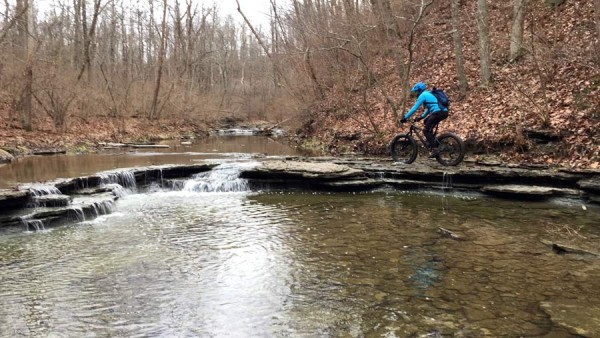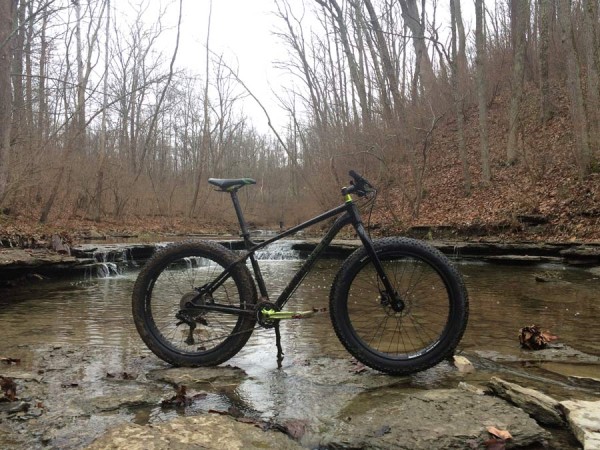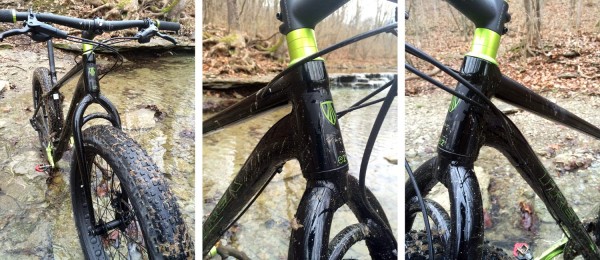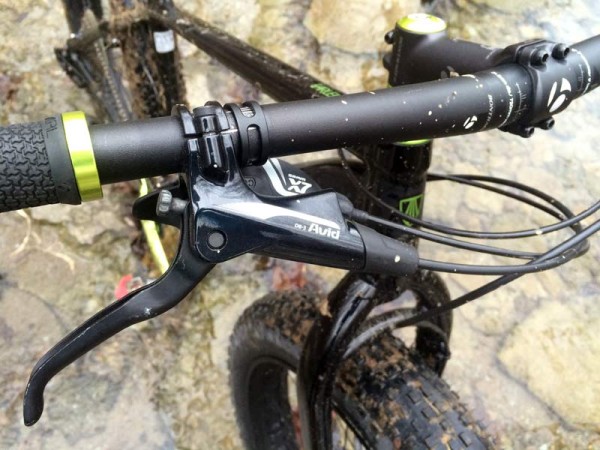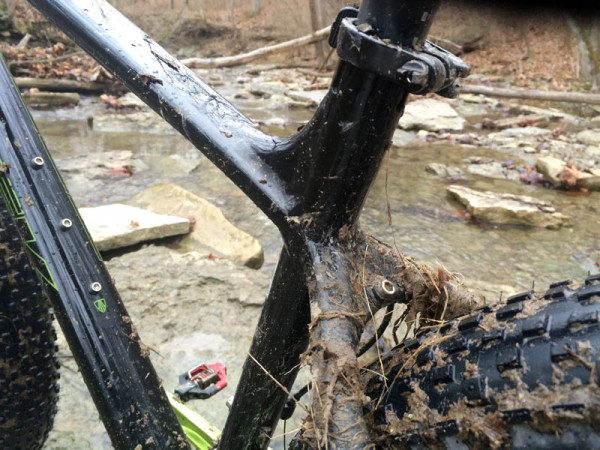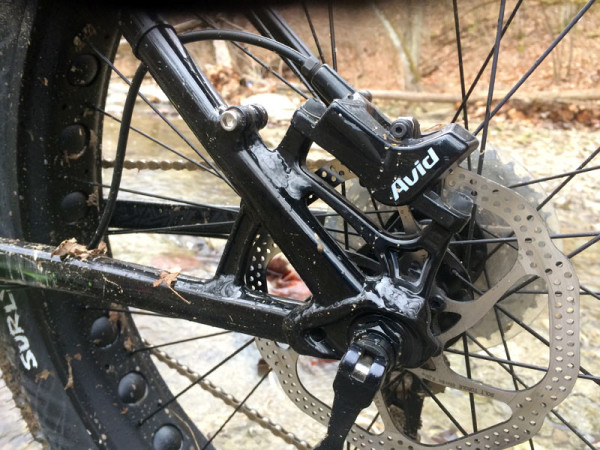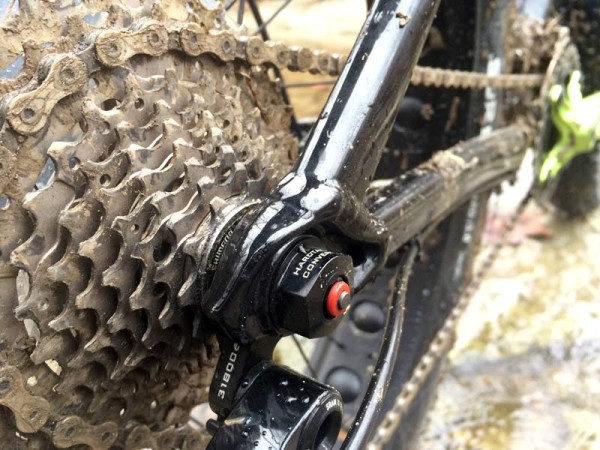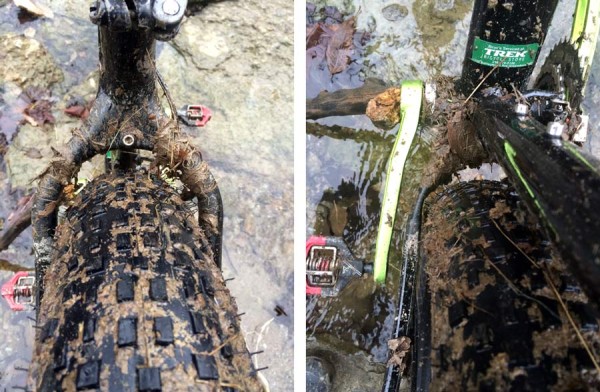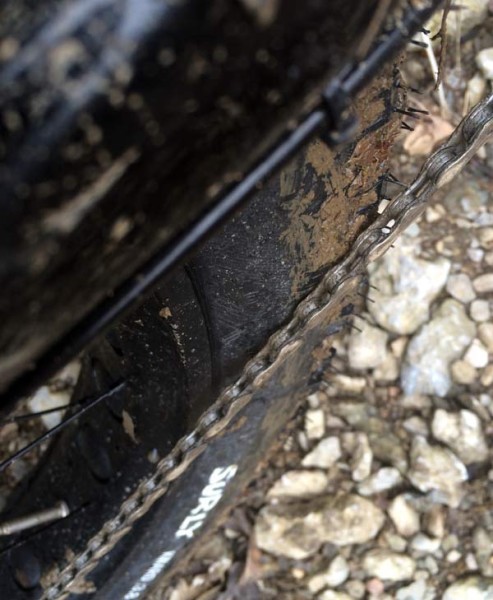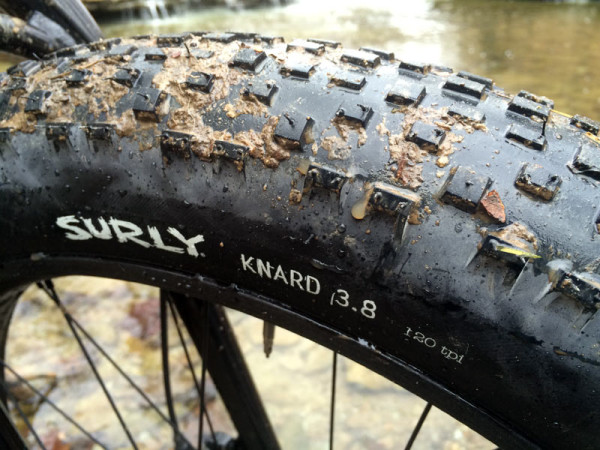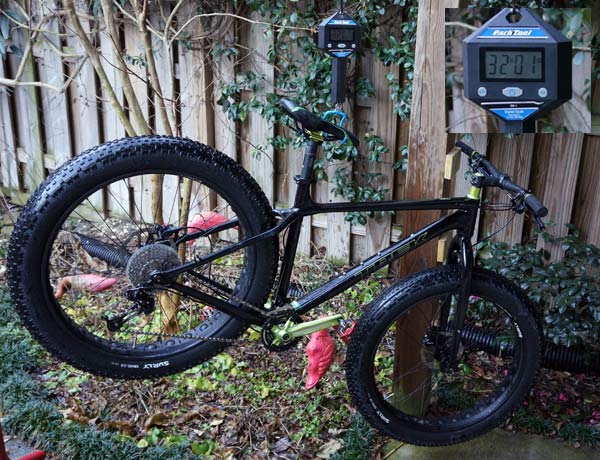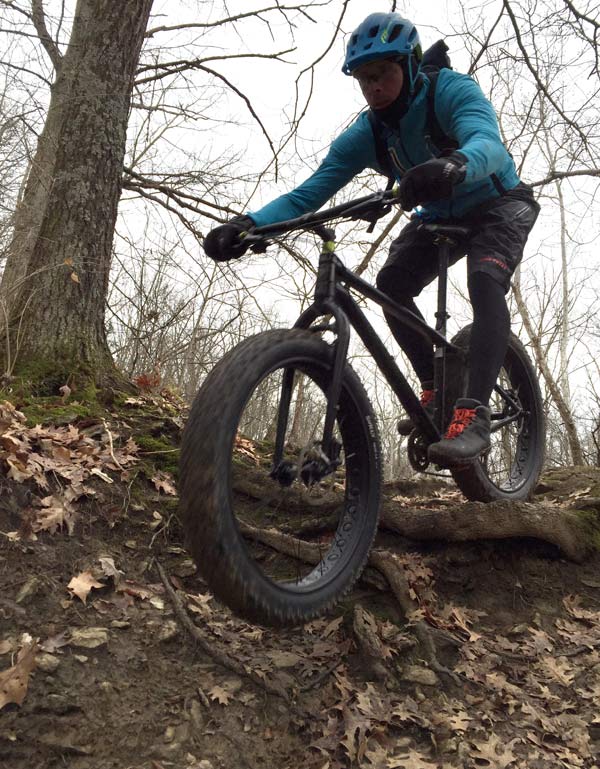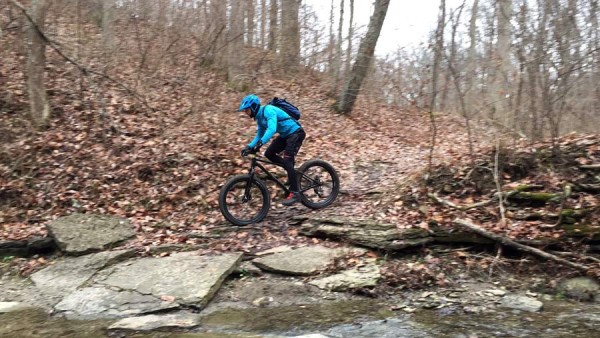While Zach and Tim are seasoned fat bike riders, I was uninitiated. So, on a short trip to Ohio to do a little long term editorial planning, I borrowed a Trek Farley from the local shop and Zach planned a ride.
Being a basically all-29er-all-the-time (with suspension) type mountain biker, this would be quite a different experience for me. Or so I thought. Turns out, it was just like mountain biking because, well, it is. Only with ridiculous amounts of traction and the ability to blow through soft, wet sections and stream crossings as though they weren’t even there. Yaaay Fat Bikes.
Now, about the Trek specifically. Without riding other fat bikes for comparison, all I can say about the Farley is they seemed to have nailed it. If there’s supposed to be a learning curve with fat bikes, there was none here. It rode great, handled great and, other than letting a stupid 1mm thorn force a pit stop, did everything a good mountain bike should do…
FRAME DETAILS & ACTUAL WEIGHTS
This is last year’s model, so the spec leans pretty close to the current Farley 6 with a few notable changes – this one had Avid DB3 brakes and Surly Rolling Darryl rims/Knard tires, the comparable 2015 model gets DB1 brakes and Sun-Ringle Mulefat rims and Bontrager tires. The rear mech switches from SRAM to Shimano, and shifters drop from X7 to X5. The frame carries over unchanged and is a hydroformed Alpha aluminum piece that was stiff and stable. I tested the 19.5″ frame size and there was plenty of room for whipping it around under my 6’2″ body.
Up front, a tapered headtube sits atop a suspension corrected fork that’s big and strong thanks to bloated tubes and a secondary arch. The higher end model comes with a Rockshox Bluto, and you can put on here down the road without changing the bike’s geometry. This rigid fork is spaced at 135, though, so you’d need to get axle adapters to put the current wheel in a Bluto’s 150mm spaced dropouts a different front hub, as the stock hub on the 6 is not convertible to 150mm..
Internal shifter cable runs keep it tidy, but the rear brake hose runs outside the downtube. There’s also internal routing for a stealth dropper post.
The cockpit is all Bontrager and all alloy. Headset, grip lock rings and other bolts and pieces are all color matched.
Tube shaping looks nice and presumably keeps the frame stiff. It’s a bit hard to tell if things are flexing when riding on almost 4″ of squirmy rubber, but there wasn’t any drivetrain issues or rub.
Rack mounts sit just in front of post mount rear brakes.
The frame uses their Closed Convert dropouts, which allow for both thru axle and QR wheels to be used. They’re spaced at 170mm for the rear.
The bike comes with 26×3.8 tires, and that appears to be the limit of what’ll fit inside the rear triangle while still allowing some clearance for mud…
…and the chain when in the lowest gear combo. The bottom bracket has a 100mm shell, and this minimal amount of chain clearance at the tire isn’t abnormal. That doesn’t make it any less alarming to look at, but hey, it’ll scrape one side of the tire clean! Fat bikes with bigger tires typically get wider spindles with spacers. That said, the wider your spindle gets, the more frequently you’ll clip your pedals when turning.
About the only complaint I had was the Knard’s low tread profile. Even with the extra girth, I was slipping around a bit in some corners. For more southern areas, this would probably be fine, but for actually riding in the snow or muck, I’d want something like the 45NRTH Van Helga or Vee Snowshoe.
The complete bike with my own Crank Brothers Candy pedals came in at 32lb 1oz (~14.1kg). That’s with tubes in the tires.
RIDING IMPRESSIONS
What was most impressive about the Farley is that I could just hop on and rip through the trails. There was no figuring out how a fat bike handles or learning some strange new skills. It rode just like a mountain bike should, and a darn good one at that. I was whipping it between the trees as though I’d been riding the bike for years. It really surprised me how easily I could lift the rear end to flick it around a tight corner or over a fallen tree. The oversized tires make it look heavy, it felt anything but.
The Trek Store owner highly recommended setting the tires at about 7psi, and I think I had it close to that, but with tubes I erred on the side of preventing pinch flats. Still, the air pressure was very low, which was great for traction. There are a couple instances where it felt bouncy, but never to the point where it through me off course. I get the sense more time with the bike and setting it up tubeless would let me find the sweet spot and eliminate any undue bobbing altogether.
While I may not (yet) be able to wax poetic on the subtleties of different fat bikes like my compatriots here, I do know a good mountain bike when I ride it. And this is a good mountain bike.
Now for the bad news: Trek’s all sold out for the season. But the Trek Store of Greensboro has two as of this posting, with a small amount of mud on the 19.5″.
